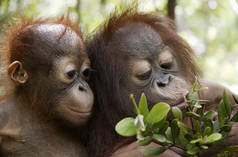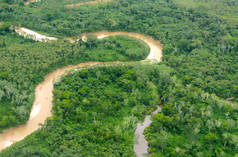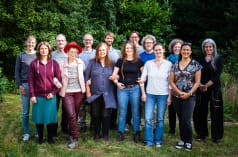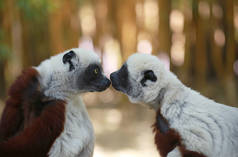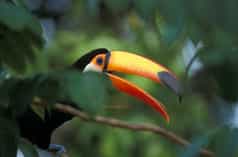Scientists Identify Ecuador’s Yasuní National Park as one of the Most Biodiverse Places on Earth
Jan 21, 2010
A team of scientists has documented that Yasuní National Park, located in the core of the Ecuadorian Amazon, is the most diverse area in all of South America and shatters world records for a wide array of plant and animal groups, from amphibians to trees to insects.
A team of scientists has documented that Yasuní National Park, located in the core of the Ecuadorian Amazon, is the most diverse area in all of South America and shatters world records for a wide array of plant and animal groups, from amphibians to trees to insects. “Yasuní is at the center of a small zone where South America’s amphibians, birds, mammals, and vascular plants all reach maximum diversity,” said Dr. Clinton Jenkins of the University of Maryland. “We dubbed this area the ‘quadruple richness center.’”
The study is published in the open-access scientific journal PLoS ONE. “The 150 amphibian species documented to date throughout Yasuní is a world record for an area of this size,” said Shawn McCracken of Texas State University. “There are more species of frogs and toads within Yasuní than are native to the United States and Canada combined.”
The scientists also confirmed that an average upland hectare (2.47 acres) in Yasuní contains more tree species, 655, than are native to the continental United States and Canada combined. The number of tree species rises to over 1,100 for an area of 25 hectares. “In just one hectare in Yasuní, there are more tree, shrub, and liana (woody vines) species than anywhere else in the world,” said Gorky Villa, an Ecuadorian botanist working with both the Smithsonian Institution and Finding Species.
Perhaps the most impressive statistic of all is that a single hectare of forest in Yasuní is projected to contain 100,000 insect species. According to eminent entomologist Dr. Terry Erwin, that is the highest estimated diversity per unit area in the world for any plant or animal group. “One of our most important findings about Yasuní is that small areas of forest harbor extremely high numbers of animals and plants,” said lead author Margot Bass, President of Finding Species, a non-profit with offices in Maryland and Quito, Ecuador. “Yasuní is probably unmatched by any other park in the world for total numbers of species.” The extraordinary diversity of Yasuní is best exemplified at the 6.5 km2 (1600 acre) Tiputini Biodiversity Station, located on the northern edge of the park. “The Tiputini Biodiversity Station is home to 247 amphibian and reptile species, 550 bird species, and around 200 mammal species, including 10 primates and an array of large predators,” said Dr. Kelly Swing of the University of San Francisco in Quito, Ecuador. “In addition, the station is the richest site in the world for bats,” added researcher Dr. Thomas Kunz of Boston University. “We estimate that over 100 different bat species inhabit this small area.”
Yasuní also contains 28 endangered vertebrates on the IUCN Red List, including threatened large primates (White-bellied Spider Monkey and Poeppig's Woolly Monkey) and aquatic mammals (Giant Otter and Amazonian Manatee), and hundreds of regional endemic species found nowhere else on Earth. “What makes Yasuní especially important is its potential to sustain this extraordinary biodiversity in the long term,” said Dr. Matt Finer of Save America’s Forests. “For example, the Yasuní region is predicted to maintain wet, rainforest conditions as climate change-induced drought intensifies in the eastern Amazon.” The paper concludes with a number of science-based policy recommendations. One key recommendation is as a moratorium on new oil exploration or development projects within the park, particularly in the remote and relatively intact—but oil rich—northeast corner that contains oil blocks 31 and ITT. The scientists concluded that oil can not be extracted from this region without significant and irreversible negative ecological impacts. The Ecuadorian government has been promoting a revolutionary plan, known as the Yasuní-ITT Initiative, which would leave the park’s largest oil reserves in the ITT block permanently under the ground.
Matt Finer Save America’s Forests Tel.: 202•544•9219 matt@saveamericasforests.org



